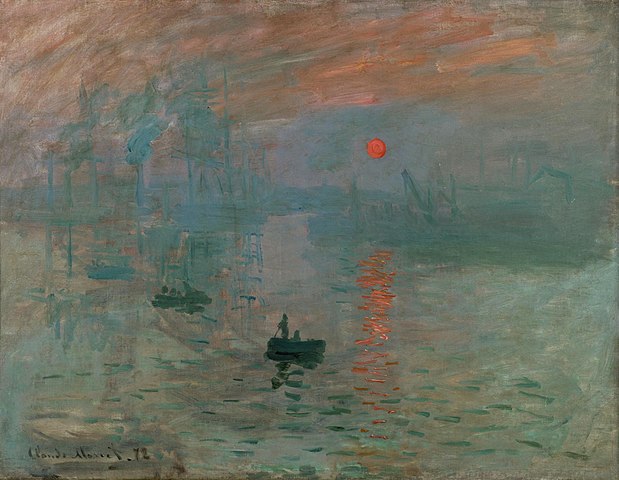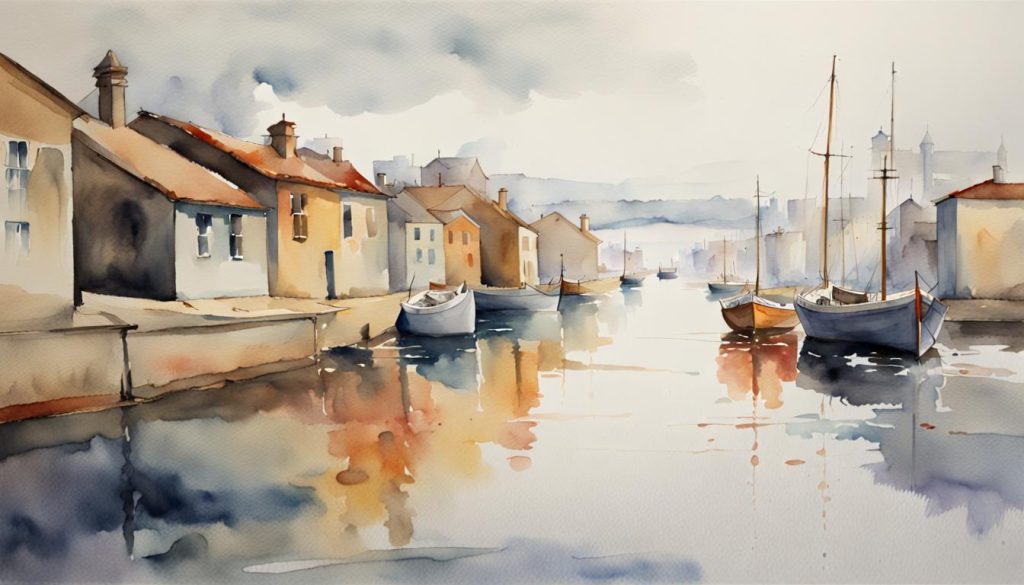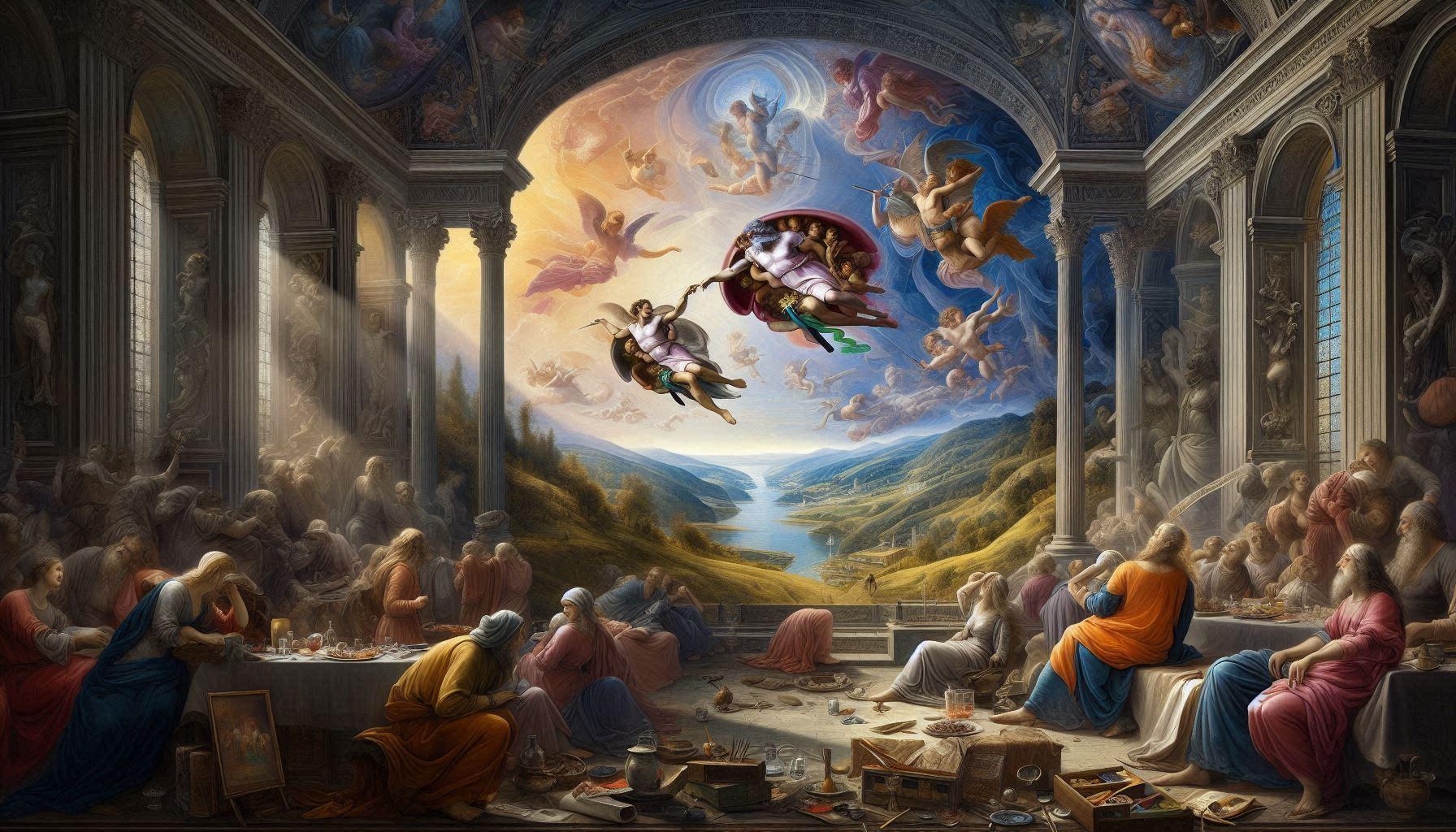Impressionism, a groundbreaking art movement of the late 19th century, revolutionized the art world with its vibrant hues, loose brushstrokes, and focus on capturing fleeting moments. This article delves into the world of Impressionism, exploring its origins, key characteristics, and the masters of Impressionism who shaped its legacy.
The Pioneers of Impressionism

Claude Monet: Monet, the undisputed master of Impressionism, captured the essence of light and atmosphere in his landscapes. His iconic works, such as “Impression, Sunrise” (1872), exemplify the movement’s focus on capturing the changing effects of light.
Pierre-Auguste Renoir: Renoir’s paintings celebrated the beauty of everyday life, portraying scenes of leisure and social gatherings. His soft brushstrokes and warm colors exuded a sense of joy and tranquility.
Edgar Degas: Degas’s unique style captured the movement and grace of ballet dancers. His paintings and sculptures froze ephemeral moments in time, revealing the dynamism and elegance of human form.
Other Notable Impressionist Artists
Camille Pissarro: Known as the “Father of Impressionism,” Pissarro played a crucial role in developing the movement’s techniques. His landscapes showcased the rural countryside and the changing seasons.
Berthe Morisot: One of the few female Impressionists, Morisot depicted intimate scenes of women and children. Her delicate brushwork and soft colors conveyed a sense of domesticity and tranquility.
Alfred Sisley: Sisley’s landscapes captured the serenity and beauty of the French countryside. His paintings often featured rivers, meadows, and trees, rendered with subtle colors and atmospheric effects.
10 Iconic Impressionist Paintings
| Title | Artist | Description | Gallery |
|---|---|---|---|
| Impression, Sunrise | Claude Monet | A hazy sunrise over the port of Le Havre, capturing the fleeting light and atmosphere of the moment. Contains the blue, orange, and grey color palette that became characteristic of Impressionism. | Musée Marmottan Monet, Paris |
| Bal du moulin de la Galette | Pierre-Auguste Renoir | A vibrant depiction of a lively outdoor dance hall in Paris, showcasing Renoir’s mastery of capturing dappled light and joyful crowds. | Musée d’Orsay, Paris |
| The Dance Class | Edgar Degas | A glimpse into the world of ballet dancers rehearsing, Degas’ work emphasizes unique angles, precise movement, and the contrast between practice and performance. | Musée d’Orsay, Paris |
| Paris Street; Rainy Day | Gustave Caillebotte | A large-scale, almost photorealistic painting showing a wide Parisian street on a rainy day. Demonstrates the movement’s interest in urban life and experimenting with perspective. | The Art Institute of Chicago, USA |
| Luncheon of the Boating Party | Pierre-Auguste Renoir | A lively scene of friends enjoying food, drinks, and conversation on a riverside terrace. Exemplifies Renoir’s ability to convey warmth, atmosphere, and the pleasures of leisure. | The Phillips Collection, Washington D.C. |
| Water Lilies series | Claude Monet | A vast collection of paintings focusing solely on Monet’s water lily pond at his home in Giverny. These works explore changing light, reflections, and transition into a more abstract style. | Various museums worldwide, including the Musée de l’Orangerie, Paris |
| The Cradle | Berthe Morisot | A tender, intimate portrait of a mother watching over her sleeping child. Morisot’s soft brushwork and gentle use of color emphasize the domestic setting and bonds of maternal love. | Musée d’Orsay, Paris |
| The Rehearsal | Edgar Degas | Another of Degas’ ballet-focused artworks, this one captures a sense of motion and pause simultaneously. Dancers stretch, chat, and practice amidst a grand studio space. | The Burrell Collection, Glasgow |
| A Bar at the Folies-Bergère | Édouard Manet | A complex tableau including a barmaid, her reflection, and a bustling crowd behind. Manet plays with perspective and hints at themes of consumerism and fleeting urban encounters. | Courtauld Gallery, London |
| Bathers at Asnières | Georges Seurat | While Seurat is more commonly connected to Post-Impressionism, this early work shows Impressionist characteristics. People relax by the river Seine, showcasing the movement’s interest in leisure and light’s play on water. | National Gallery, London |
Beyond France: Impressionism’s Global Reach
While Impressionism’s heart beat in Paris, its vibrant pulse extended far beyond France’s borders. The movement’s emphasis on light, loose brushwork, and everyday subject matter resonated with artists worldwide. Here’s a glimpse at how Impressionism blossomed across continents:
- America: Mary Cassatt and Childe Hassam American artists like Mary Cassatt, who exhibited alongside the French Impressionists, brought the movement’s sensibilities to the United States. Childe Hassam captured the energy of bustling New York with his vibrant Impressionist cityscapes.
- Spain: Joaquin Sorolla Known as the “master of light,” Sorolla bathed his sun-drenched beach scenes in a vibrant Impressionist style unique to his Mediterranean heritage.
- Australia: The Heidelberg School Artists like Tom Roberts and Arthur Streeton were key figures in the Australian Impressionist movement. Their paintings celebrated the unique light and landscapes of their homeland.
Impressionism’s spread was a testament to its universal appeal. Artists around the world found inspiration in its focus on capturing the fleeting beauty of their own environments, proving that while Impressionism may have been born in France, its spirit was truly global.
The Techniques of Impressionism

Impressionist artists employed several techniques to achieve their distinctive style:
- Loose brushstrokes: Bold, visible brushstrokes created a sense of movement and spontaneity.
- Vibrant colors: Impressionists used pure, unmixed colors to capture the intensity of light and the effects of changing seasons.
- En plein air painting: Artists painted outdoors to capture the natural light and atmosphere of their surroundings.
- Fleeting moments: Impressionist paintings often depicted everyday scenes, capturing the transient beauty of a particular moment.
The Influence of Impressionism
Impressionism had a profound impact on subsequent art movements, including Post-Impressionism, Fauvism, and Cubism. Its emphasis on color and light inspired artists to explore new ways of representing the world.
The Influence of Japanese Art
Japanese art, particularly ukiyo-e prints, influenced Impressionist artists in several ways:
- Asymmetry: Impressionists adopted the asymmetrical compositions of ukiyo-e prints, creating more dynamic and visually engaging paintings.
- Flattened perspective: Japanese prints often depicted scenes from a flattened perspective, which Impressionists incorporated into their landscapes.
- Bold colors and patterns: The vibrant colors and decorative patterns found in ukiyo-e prints inspired Impressionist artists to experiment with color and design.
The Legacy of Impressionism
Impressionism’s legacy lives on today, with its influence visible in contemporary art and popular culture. Its focus on light, color, and fleeting moments continues to captivate audiences worldwide.
The Critics: Controversy and Acceptance
The Impressionists weren’t merely painting a new world; they were shattering the established artistic order. This radical departure from traditional styles was met with shock and disdain from the art establishment. Critics derided the loose brushwork as sloppy and unfinished, scoffed at the everyday subject matter as unworthy of fine art, and condemned the bright colors as garish and unnatural. Louis Leroy, a critic, coined the term “Impressionism” after Monet’s painting “Impression, Sunrise”, using it as an insult.
“A preliminary drawing for a wallpaper pattern is more finished than this seascape.”
Louis Leroy, referring to Monet’s “Impression, Sunrise”
However, amidst the scorn, there were a few forward-thinking critics and art enthusiasts who recognized the groundbreaking nature of Impressionism. Writers like Émile Zola defended the artists, praising their fresh perspective and ability to capture the essence of modern life. Gradually, through independent exhibitions and the support of dedicated collectors, the tide of public opinion began to shift.
As the initial shock wore off, audiences began to appreciate the beauty in Impressionism’s shimmering light, vibrant colors, and honest portrayals of the world around them. By the early 20th century, Impressionism had achieved widespread recognition and the works that were once mocked were now hailed as masterpieces.
Conclusion to the Masters of Impressionism
Impressionism revolutionized art by capturing the beauty of everyday life and the fleeting effects of light. The movement’s pioneers, including Monet, Renoir, and Degas, left an enduring mark on art history. Their techniques and innovations continue to inspire artists and delight audiences to this day.


